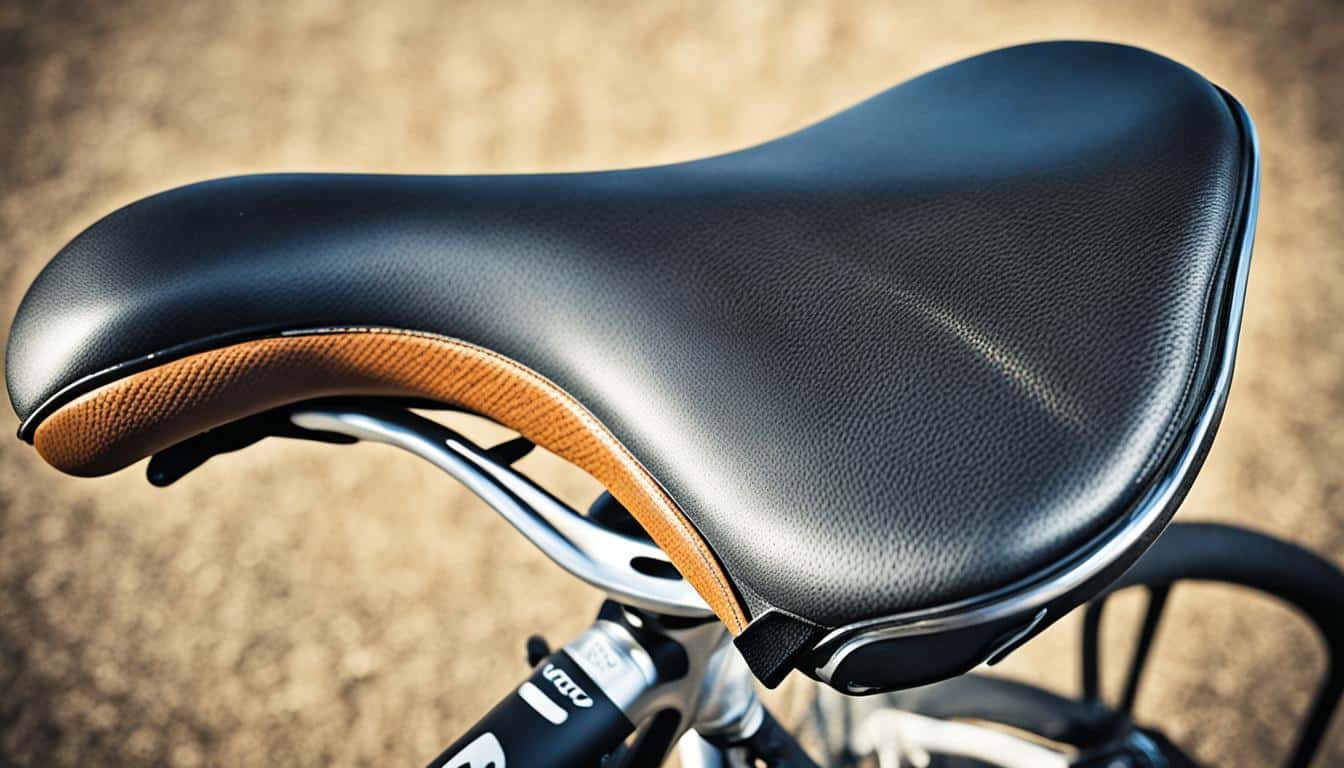When it comes to bikes, there are numerous components that work together to create a smooth and efficient ride. Understanding the different parts of a bike is not only essential for maintaining and repairing your bike but also for making informed decisions about upgrades and adjustments. Let’s take a closer look at the key components that make up a bike:
Bike frame: The bike frame serves as the foundation of the bike, providing support and structure. It consists of the top tube, head tube, down tube, seat tube, seat stays, and chain stays.
Brake: The brake system allows you to slow down and stop. There are various types of brakes, such as rim brakes and disc brakes, each with its own advantages.
Pedal: The pedals are where your feet go and allow you to transfer power to the bike’s drivetrain, propelling the bike forward.
Rim: The rim is the outer edge of the wheel where the tire is mounted. It provides structural integrity and supports the tire.
Saddle: The saddle, also known as the bike seat, provides a comfortable and supportive place for the rider to sit during a ride.
Fork: The fork is the part of the bike that holds the front wheel and connects it to the frame. It plays a crucial role in steering and absorbing shocks.
Headset: The headset is the set of bearings and components that allow for smooth and controlled steering of the front fork and handlebars.
Bottom bracket: The bottom bracket houses the crankset and allows for the rotation of the pedals.
Front wheel: The front wheel is responsible for steering and stability. It consists of the hub, rim, spokes, and tire.
Rear wheel: The rear wheel is responsible for propulsion and provides support for the bike. It also consists of the hub, rim, spokes, and tire.
Seat post: The seat post attaches the saddle to the bike frame and allows for adjustments in saddle height.
Key Takeaways: Parts Of A Bike
- The bike frame is the core structure of the bike, providing support and stability.
- Brakes are essential for safety and allow you to slow down and stop.
- The pedals transfer power from the rider’s legs to the drivetrain.
- The rim provides the outer circle for the tire and supports it.
- The saddle ensures comfort and support for the rider during the ride.
Bike Frame Parts
The bike frame is the foundation and backbone of every bicycle. It provides the essential structure and support for all other bike components, ensuring stability, durability, and efficient power transfer. Understanding the different parts of a bike frame is key to comprehending the overall mechanics of a bicycle.
The bike frame consists of several key components:
- Top Tube: The top tube is the horizontal part of the frame that connects the head tube to the seat tube. It plays a crucial role in determining the size and fit of the bike.
- Head Tube: The head tube is located at the front of the bike frame and houses the headset, allowing for smooth steering and control.
- Down Tube: The down tube is the angled tube that runs downward from the head tube to the bottom bracket. It contributes to the overall strength and stability of the frame.
- Seat Tube: The seat tube extends vertically from the bottom bracket to the seat stays. It determines the height and angle of the bike’s saddle.
- Seat Stays: The seat stays are the two tubes that connect the top of the seat tube to the rear dropouts. They help absorb vibrations and provide flexibility for a comfortable ride.
- Chain Stays: The chain stays are the two tubes that extend from the bottom bracket to the rear dropouts. They provide support for the rear wheel and help transmit power from the pedals to the rear wheel.
The bike frame parts work together to create a strong and rigid structure that can withstand the demands of various riding conditions. Whether you’re cruising on the road or tackling rough terrains, a well-designed bike frame ensures a smooth and enjoyable ride.
Bike Frame Parts Overview
| Component | Description |
|---|---|
| Top Tube | The horizontal part of the frame that connects the head tube to the seat tube. |
| Head Tube | The tube located at the front of the bike frame, housing the headset for steering control. |
| Down Tube | The angled tube that runs downward from the head tube to the bottom bracket. |
| Seat Tube | The vertical tube that extends from the bottom bracket to the seat stays. |
| Seat Stays | The tubes that connect the top of the seat tube to the rear dropouts, providing support and vibration absorption. |
| Chain Stays | The tubes that extend from the bottom bracket to the rear dropouts, providing support for the rear wheel and power transmission. |
Front of the Bike Parts
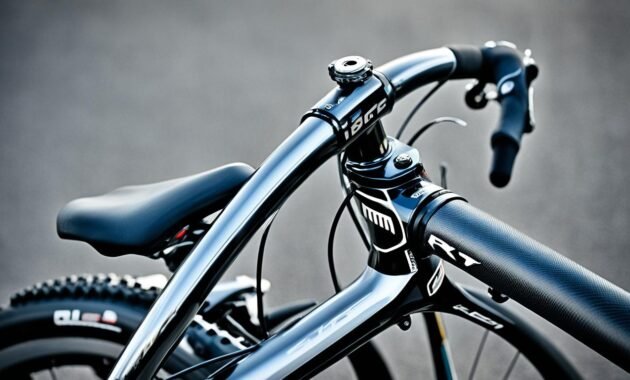
When it comes to the front of the bike, several key components work together to ensure optimal performance and control. Let’s take a closer look at each of these parts:
Fork
The fork is a critical part that connects the front wheel to the bike frame. It plays a crucial role in absorbing shocks and providing stability while riding over uneven terrain.
Headset
The headset is a set of bearings and components that enable the handlebars to turn smoothly, allowing for steering control. It is located at the top of the fork and connects the fork to the frame.
Stem
The stem is the component that connects the fork to the handlebars. It not only serves as a structural link but also provides adjustable positioning to customize the rider’s comfort and riding style.
Handlebars
The handlebars are the primary contact point for the rider, providing control and maneuverability. They come in various shapes and sizes to accommodate different riding preferences and disciplines.
Brake Levers
The brake levers are responsible for controlling the braking system of the bike. When squeezed, they activate the brakes, allowing the rider to slow down or come to a complete stop when needed.
These front bike parts work together to ensure stability, steering control, and braking functionality. By understanding their roles and importance, riders can make informed decisions when it comes to maintenance, upgrades, or replacements.
| Component | Description |
|---|---|
| Fork | Connects the front wheel to the bike frame and absorbs shocks |
| Headset | Enables smooth steering by connecting the fork to the frame |
| Stem | Connects the fork to the handlebars and offers adjustable positioning |
| Handlebars | Provides control and maneuverability for the rider |
| Brake Levers | Controls the braking system for effective stopping power |
Bike Wheel Parts
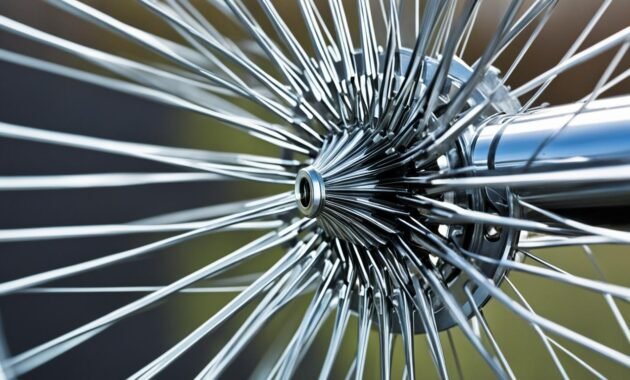
The bike wheel is a critical component that consists of various parts working together to provide stability, control, and a smooth ride. Let’s take a closer look at the key elements that make up a bike wheel: the hub, rim, spokes, and tire.
Hub
The hub is the central part of the wheel, located at the axle’s center. It houses the bearings that allow the wheel to rotate smoothly. The hub connects the wheel to the bike frame or fork and provides support and stability. It plays a crucial role in transferring power from the rider’s pedals to the wheel.
Rim
The rim is the outer circular component of the wheel that holds the tire in place. It provides structural integrity, distributes the rider’s weight evenly, and helps maintain the tire’s shape. The rim’s design can vary depending on the type of bicycle and its intended use.
Spokes
Spokes are the thin, elongated metal rods that connect the rim to the hub. They play a crucial role in distributing the rider’s weight and external forces evenly across the wheel. Spokes provide strength, stability, and flexibility, allowing the wheel to absorb shocks and vibrations while maintaining its shape.
Tire
The tire is the outermost part of the bike wheel, in direct contact with the ground. It provides traction, cushioning, and grips the road surface, ensuring a smooth and comfortable ride. Tires come in various sizes, treads, and materials, depending on the terrain and riding style.
Understanding the different parts of a bike wheel is essential for both bike enthusiasts and casual riders. A well-maintained wheel ensures optimal performance, safety, and a comfortable riding experience.
| Component | Description |
|---|---|
| Hub | The central part of the wheel that houses the bearings and connects the wheel to the bike frame. |
| Rim | The outer circular component that holds the tire in place and provides structural integrity. |
| Spokes | Thin metal rods that connect the rim to the hub, distributing weight and providing stability. |
| Tire | The outermost part in contact with the ground, providing traction, cushioning, and a smooth ride. |
Back of the Bike Parts
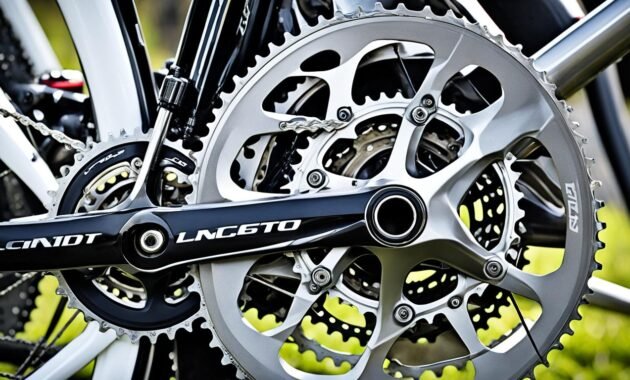
When it comes to the back of the bike, several essential components work together to ensure a smooth and efficient ride. Let’s take a closer look at each of these parts:
Crankset
The crankset is a set of gears attached to the pedals that transfer power from the rider’s legs to the rear wheel. It consists of two or three chainrings and the crank arms. The different chainrings provide varying gear ratios, allowing the rider to pedal comfortably at different speeds and terrains.
Pedals
The pedals are the part of the bike that the rider’s feet rest on and push against to generate power. They typically have a platform for the foot and may feature clips or straps to secure the rider’s feet in place. Pedals come in various styles, including flat pedals for casual riding and clipless pedals for improved power transfer.
Bottom Bracket
The bottom bracket is the component that houses the crankset and connects it to the bike frame. It consists of a set of bearings that allow the crankset to rotate smoothly. The bottom bracket is subjected to a lot of stress during cycling, so it’s important to choose a durable and well-sealed bottom bracket for optimal performance and longevity.
Chain
The chain is a crucial component that connects the crankset to the front and rear derailleurs, enabling the transfer of power from the pedals to the wheels. It is made up of individual links that mesh with the teeth of the chainrings and cassette or freewheel. Regular cleaning, lubrication, and proper tensioning of the chain are necessary for smooth shifting and efficient power transmission.
Front Derailleur and Rear Derailleur
The front and rear derailleurs are responsible for moving the chain between the different chainrings and sprockets, allowing the rider to change gears. The front derailleur guides the chain between the multiple chainrings attached to the crankset, while the rear derailleur performs the same function for the cassette or freewheel on the rear wheel. Accurate and precise shifting is essential for maintaining a consistent pedaling cadence and adapting to varying terrain.
The image above showcases the various back of the bike parts we’ve discussed, highlighting their importance and their placement on the bike.
Bike Seat Parts

The bike seat is an essential component of a bicycle, providing comfort and support for the rider. It consists of two main parts: the saddle and the seat post.
Saddle
The saddle is where the rider sits while cycling. It is designed to provide a comfortable and stable platform, allowing for a more enjoyable riding experience. Saddles come in various shapes, sizes, and materials to accommodate different riding styles and preferences. Some features to consider when choosing a saddle include padding, width, and cutouts for pressure relief.
Seat Post
The seat post is a cylindrical metal or carbon fiber tube that connects the saddle to the bike frame. It allows for adjustments in saddle height to achieve the optimal riding position. The seat post is inserted into the seat tube of the bike frame and secured with a clamp. To adjust the saddle height, the seat post can be raised or lowered, providing flexibility for riders of different heights or riding preferences.
| Saddle | Seat Post |
|---|---|
| Provides comfort and support | Allows for adjustments in saddle height |
| Various shapes, sizes, and materials | Cylindrical metal or carbon fiber tube |
| Padding, width, and cutouts for pressure relief | Inserted into the seat tube of the bike frame |
Frame Parts Overview
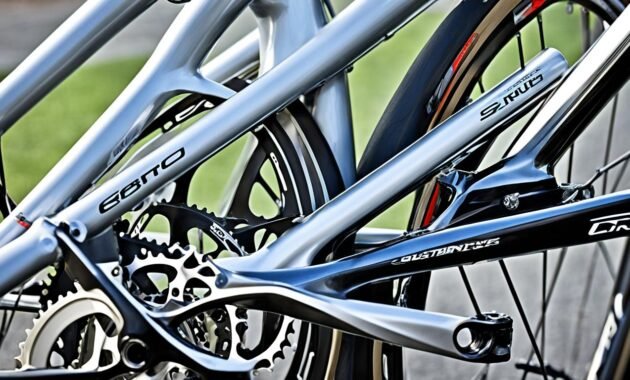
The frame is the core component of a bike, providing the foundation for its structure and performance. Understanding the different parts of the bike frame is essential for both enthusiasts and riders looking to make informed decisions about their bikes. Let’s explore the important frame parts that contribute to the overall functionality and design of a bike.
1. Top Tube
The top tube is a horizontal tube that connects the front of the bike frame to the seat tube. It plays a significant role in determining the bike’s overall length and helps provide stability and balance.
2. Head Tube
The head tube is the part of the frame that holds the headset, which allows for smooth steering. It is located at the front of the bike and connects the top tube and down tube.
3. Down Tube
The down tube is a vertical tube that runs from the head tube to the bottom bracket. It plays a crucial role in transferring the rider’s pedaling power to the rear wheel, contributing to the bike’s overall efficiency.
4. Seat Tube
The seat tube connects the top tube with the bottom bracket and holds the seat post and saddle. It determines the height at which the rider sits and affects the bike’s overall fit and riding position.
5. Seat Stays
The seat stays are the two thin tubes that connect the top of the seat tube to the rear dropouts. They provide support and strength to the rear of the frame and help absorb shocks and vibrations.
6. Chain Stays
The chain stays are the two tubes that connect the bottom bracket to the rear dropouts. They accommodate the rear wheel and chain, contributing to stability and power transmission.
Image: A visually appealing depiction of a bike frame, showcasing the interconnected parts discussed above.
Wheel Parts Overview
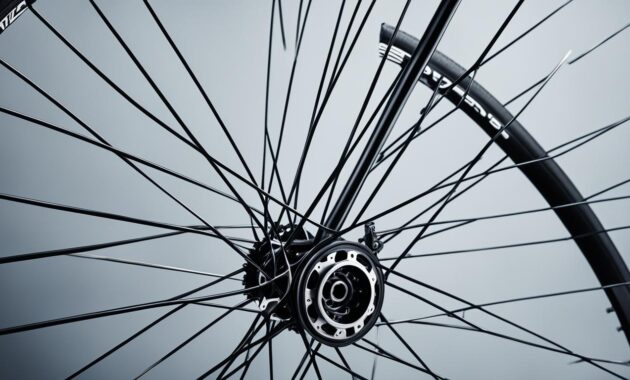
The wheel is a key component of a bike, consisting of several parts that work together to ensure smooth and efficient rolling, durability, and control. Understanding the different wheel parts can help you make informed decisions about maintenance, repairs, and upgrades.
Hub
The hub is the central part of the wheel and is responsible for connecting the wheel to the bike’s axle. It contains bearings that allow the wheel to rotate freely, reducing friction and ensuring smooth movement.
Rim
The rim forms the outer circle of the wheel and provides a surface for the tire to mount onto. It is usually made of aluminum or carbon fiber and is designed to be strong, lightweight, and capable of withstanding various terrains and riding conditions.
Spokes
Spokes are the thin metal rods that connect the rim to the hub. They play a crucial role in distributing the weight and forces applied to the wheel, providing stability and strength. Spokes are typically made of stainless steel or carbon fiber, offering durability and flexibility.
Tire
The tire is the outermost part of the wheel and comes into direct contact with the road or trail. It provides traction, cushioning, and grip, ensuring a smooth and comfortable ride. Tires come in different sizes, treads, and compounds, allowing for customization based on riding preferences and conditions.
By understanding the function and importance of wheel parts like the hub, rim, spokes, and tire, you can better appreciate the role they play in optimizing your bike’s performance. Regular maintenance, such as checking for spoke tension, tire pressure, and hub lubrication, can help extend the lifespan of your wheels and enhance your overall cycling experience bicycle components bike’s frame.
Also Read : Exploring Types Of Credit Card Options Available
Conclusion
Understanding the different parts of a bike is crucial for maintaining and repairing your bike. Each component, from the bike frame to the wheel, plays a vital role in the overall functioning and performance of your bike. By familiarizing yourself with bike anatomy, you’ll be better equipped to make informed decisions about upgrades, replacements, and adjustments.
Whether it’s the bike frame that provides the structure and support, the front of the bike with its fork and handlebars for steering, or the back of the bike with the crankset and derailleurs for power transfer, every part has its specific function and importance.
Knowing the various parts of a bike also enables you to communicate effectively with mechanics and bike specialists, ensuring that you can accurately describe any issues or requirements you may have. Additionally, understanding bike components empowers you to customize your bike according to your preferences and needs, whether it’s choosing the right saddle for comfort, upgrading to a high-performance wheelset, or optimizing your bike’s gear system.
FAQs
Q: What are the main parts of a road bike?
A: The main parts of a road bike include the frame, wheels, saddle, brake levers, gear system, handlebars, and pedals.
Q: Can you explain the components of a bicycle wheel?
A: The components of a bicycle wheel are the rim, spokes, hub, and tire. These parts work together to provide stability and support for the tire.
Q: How does the bicycle frame contribute to the overall structure of the bike?
A: The bicycle frame is the backbone of the bike, providing structure and support for all other components. It determines the bike’s geometry and overall stability.
Q: What is the purpose of the bike saddle?
A: The bike saddle provides a comfortable seating position for the rider and helps absorb shock and vibrations during the ride.
Q: What are brake calipers and how do they function?
A: Brake calipers are the parts of the bike that clamp down on the wheel rim to slow down or stop the bike. They are an essential component of the braking system.
Q: How do the rear gears of a bike contribute to its performance?
A: The rear gears of a bike provide different levels of resistance, allowing the rider to adjust the bike’s speed and performance based on the terrain.
Q: What is the role of the steerer tube in a bicycle?
A: The steerer tube connects the fork to the handlebars, allowing the rider to steer the bike and control its direction.
Source Links
- https://en.wikipedia.org/wiki/List_of_bicycle_parts
- https://thebestbikelock.com/parts-of-a-bike/
- https://www.bikeradar.com/advice/buyers-guides/bike-components
